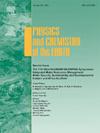Urbanization and migrant workers: Assessing social risks and crafting preventive strategies in eastern China for sustainable development
IF 3
3区 地球科学
Q2 GEOSCIENCES, MULTIDISCIPLINARY
引用次数: 0
Abstract
This study explores the social risks associated with the urbanization of migrant workers, using the Eastern part of China as a case study. Ten key risk factors were identified: social integration, urban living environment, rural land withdrawal, political participation, social network, social psychology, rural social contact, family relationships, urban enterprise employee insurance, and rural land role cognition. Among these, social integration risk, social network risk, rural social contact risk, and family relationship risk emerged as the most significant contributors to the overall risk profile. Risk assessments show consistent results, regardless of whether individual characteristics were controlled, highlighting the widespread nature of these challenges. A central risk scenario is the “urbanization dilemma,' where migrant workers face barriers to full urban integration while losing rural ties. This dilemma is driven by government policies, enterprise practices, and individual circumstances, leading to potential outcomes such as social disharmony, labor-capital conflicts, and risks of land loss and unemployment. To address these risks, a dual strategy of pre-prevention and post-control is proposed. Pre-prevention measures include promoting social integration, reforming land policies, and strengthening community support systems. Post-control focuses on conflict resolution, reskilling programs, and ongoing monitoring. These interventions aim to enhance social resilience, ensure migrant well-being, and foster sustainable urbanization.
城镇化与农民工:中国东部地区可持续发展社会风险评估与防范策略
本研究以中国东部地区为例,探讨了农民工城市化的社会风险。确定了社会整合、城市居住环境、农村土地退出、政治参与、社会网络、社会心理、农村社会交往、家庭关系、城镇企业职工保险、农村土地角色认知等10个关键风险因素。其中,社会整合风险、社会网络风险、农村社会接触风险和家庭关系风险是影响整体风险概况的最重要因素。无论个体特征是否得到控制,风险评估都显示出一致的结果,突出了这些挑战的广泛性。一个主要的风险情景是“城市化困境”,即农民工在失去与农村的联系的同时,面临着完全融入城市的障碍。这种困境是由政府政策、企业实践和个人情况驱动的,导致社会不和谐、劳资冲突以及土地流失和失业风险等潜在后果。针对这些风险,提出了事前预防和事后控制的双重战略。预防措施包括促进社会融合、改革土地政策和加强社区支持系统。后控制侧重于冲突解决、再培训计划和持续监测。这些干预措施旨在增强社会复原力,确保移民福祉,促进可持续城市化。
本文章由计算机程序翻译,如有差异,请以英文原文为准。
求助全文
约1分钟内获得全文
求助全文
来源期刊

Physics and Chemistry of the Earth
地学-地球科学综合
CiteScore
5.40
自引率
2.70%
发文量
176
审稿时长
31.6 weeks
期刊介绍:
Physics and Chemistry of the Earth is an international interdisciplinary journal for the rapid publication of collections of refereed communications in separate thematic issues, either stemming from scientific meetings, or, especially compiled for the occasion. There is no restriction on the length of articles published in the journal. Physics and Chemistry of the Earth incorporates the separate Parts A, B and C which existed until the end of 2001.
Please note: the Editors are unable to consider submissions that are not invited or linked to a thematic issue. Please do not submit unsolicited papers.
The journal covers the following subject areas:
-Solid Earth and Geodesy:
(geology, geochemistry, tectonophysics, seismology, volcanology, palaeomagnetism and rock magnetism, electromagnetism and potential fields, marine and environmental geosciences as well as geodesy).
-Hydrology, Oceans and Atmosphere:
(hydrology and water resources research, engineering and management, oceanography and oceanic chemistry, shelf, sea, lake and river sciences, meteorology and atmospheric sciences incl. chemistry as well as climatology and glaciology).
-Solar-Terrestrial and Planetary Science:
(solar, heliospheric and solar-planetary sciences, geology, geophysics and atmospheric sciences of planets, satellites and small bodies as well as cosmochemistry and exobiology).
 求助内容:
求助内容: 应助结果提醒方式:
应助结果提醒方式:


